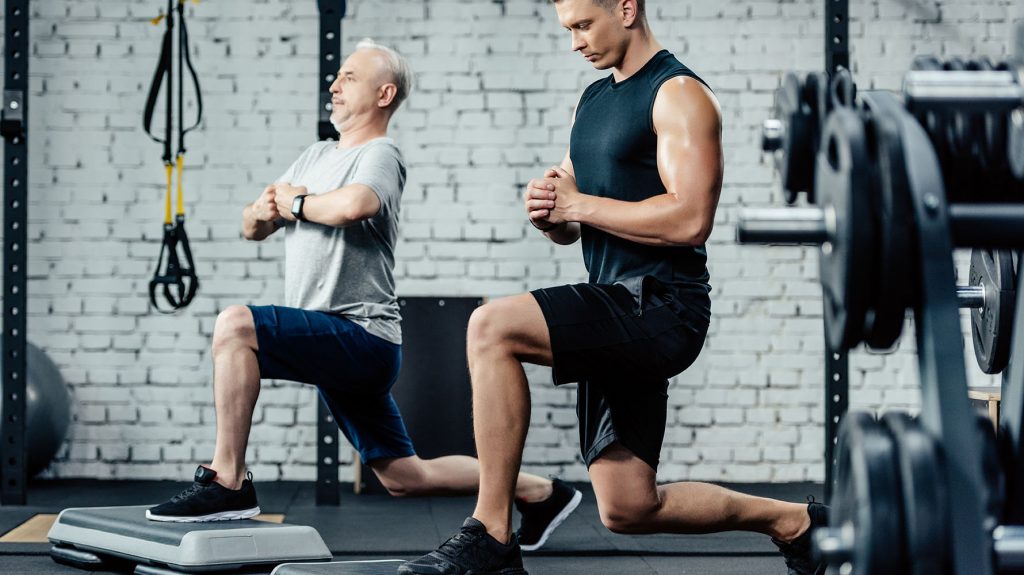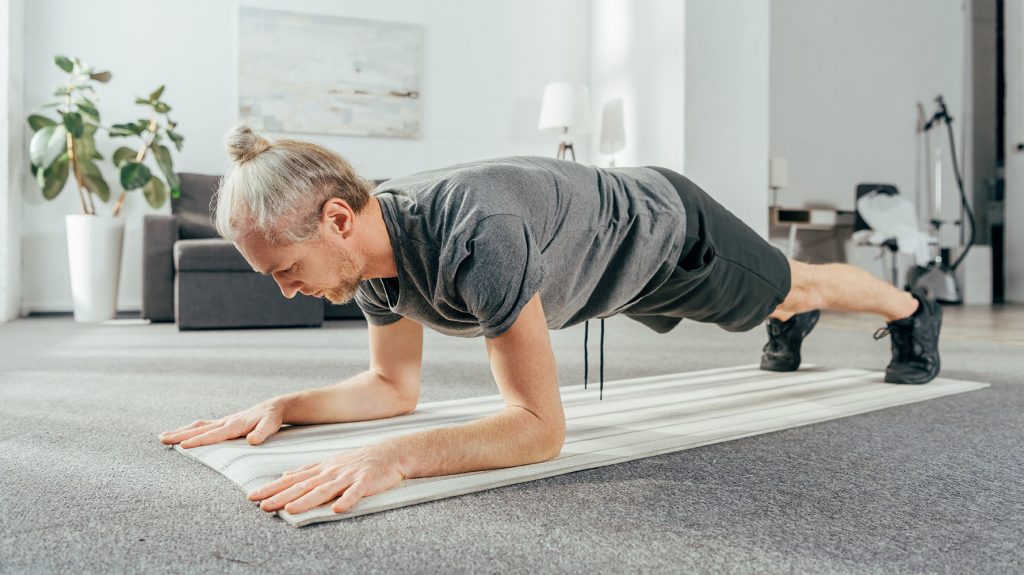The Functional Strength Training program has become very popular in the fitness industry. Functional Strength Training (FST) is a combination of functional and strength training in one session.
It focuses on developing strength and exercising your muscles in a similar way to how your body would be used in everyday life. A greater number of muscle groups and fibers of different types are involved in the workout, an optimal load is created on the entire skeletal system and ligamentous apparatus, which contributes to the burning of more calories and an even distribution of the load on our entire musculoskeletal system.
One of the most important features of functional training is the absence of excessive tension in the joints, spine, which reduces the likelihood of injuries associated with the unnatural position of the body during physical activity.
Benefits of Functional Strength Training
The benefits of functional training differ from other workouts because of the way it targets your body. Functional training exercises typically use the whole body, and emphasize core strength, flexibility, stability, coordination, and endurance.
In the process of functional strength training, almost all muscle groups, including deep ones, are worked out. This is achieved by constantly changing the position of the body (squatting, reaching, lying, standing). The effect can be achieved only with regular training, which takes about 60 minutes. Exercise focuses on perfecting your exercise technique, not building muscle.
The main benefits of functional strength training are the following:
- improved heart and lung function.
- greater muscle memory.
- a beneficial effect on the musculoskeletal system, including in its various diseases.
- functional strength training can help improve the posture.
- helps with joint pain.
- helps to lose weight.

Features and Exercises of Functional Strength Training
During functional strength training, all muscles of the body are worked out, including small and stabilizing muscles. The focus is on the central part of the body, the deep muscles of the abdomen and back.
During functional strength training, the most common exercises performed are:
- Squats,
- Lunges,
- Push-ups,
- Swings,
- Dips,
- Bends.
Simple exercises have amazing effects. By improving the overall function of your body, boosting muscle strength and endurance, and developing muscle and body stability everyday activities can be completed with more ease. Many fitness trainers recommend combining them with the use of various weights: resistance bands, fitness balls, barbells, and dumbbells.
Frequent change of exercises, not only from training to training, but also within one session does not allow the muscles to get used to these loads. This means that they will work to the maximum in each session.
Functional strength training allows you:
- To target large muscle groups and small muscles at the same time
- To improve coordination
- To reduce the amount of body fat
- To correct body shape
- To improve metabolic processes in the body
- To increase immunity
- To improve posture
What is the Difference Between Functional Training and Traditional Training?
- Exercises are performed quickly, in an “explosive” mode.
- Traditional training focuses on building strength in one muscle group at a time. Functional training, on the other hand, focuses on multi-joint movements that stabilize specific muscle groups and move others to mimic activities of daily life.
- Only free weights are used.
- Bench is not used.
- There is no clear division into the strength part of training and cardio; in functional training, exercises from both groups are mixed.
- The circuit method is actively used, which is not popular in traditional bodybuilding.
- There is no psychological fixation to feel the work of a certain muscle group (and it is almost impossible to focus on the work of stabilizing muscles).
- The most important difference, during functional strength training, you train overall movements, not muscles.

Functional Strength Training Program at Home
This is a functional training option that you can do at home. Here is a great set of exercises for weight loss and muscle tone. You can increase the load by using dumbbells or increasing the number of reps.
The specified number of repetitions is calculated for the average level of the trainee. Beginners can reduce the number of repetitions by half, advanced ones, on the contrary, increase. 15-30 seconds of rest between sets will be enough.
Be sure to warm up before training and stretch after training.
FIRST CIRCLE
1. Turning Lunge: 15 reps on each leg.
2. In & Out Push-Ups: 8 reps
3. Hip abduction with Step up +: 12 reps each
4. Walking Plank: 15 reps
5. Incline Front to Back Leg Swing: 12 reps
6. Knee to elbow plank: 15 repetitions each
7. Jump squat: 15 reps
Rest 1 minute
SECOND CIRCLE
1. Side Lunge + Dumbbell Press: 15 reps each
2. Pike Push-ups: 12 reps
3. Single Leg Deadlift: 15 reps each
4. Alternating Arm Leg Plank: 10 reps
5. Squat + hip abduction: 15 reps each
6. Plank Pull Throughs: 12 reps each
7. High-knee Run: 20 reps
Rest 1 minute
THIRD CIRCLE
1. Reverse Lunge with Knee Raises: 15 reps each
2. Reverse Plank with Toe Taps: 12 reps
3. Single-leg chair squat: 15 reps each
4. Knee-pull Plank: 15 reps each
5. Standing knee-to-elbows: 15 reps each
6. Dive Bomber Push-up: 20 reps
7. Running in Place: 25 reps each


